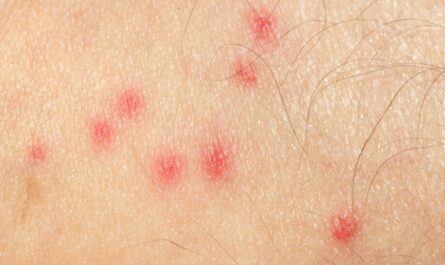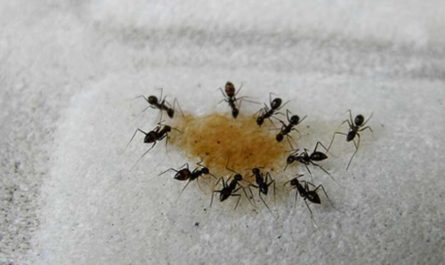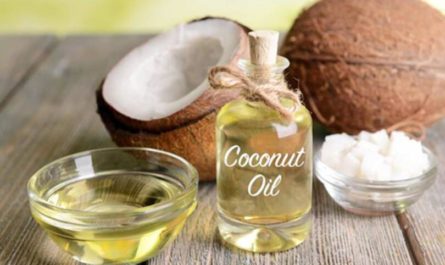Weeds can be a persistent problem in gardens and outdoor spaces. Many people are seeking natural alternatives to chemical herbicides. One popular and effective option is vinegar weed killer. The acetic acid in vinegar can help kill unwanted plants. In this comprehensive guide, we will explore the science behind vinegar, and how to create your vinegar weed-killer recipe step by step.
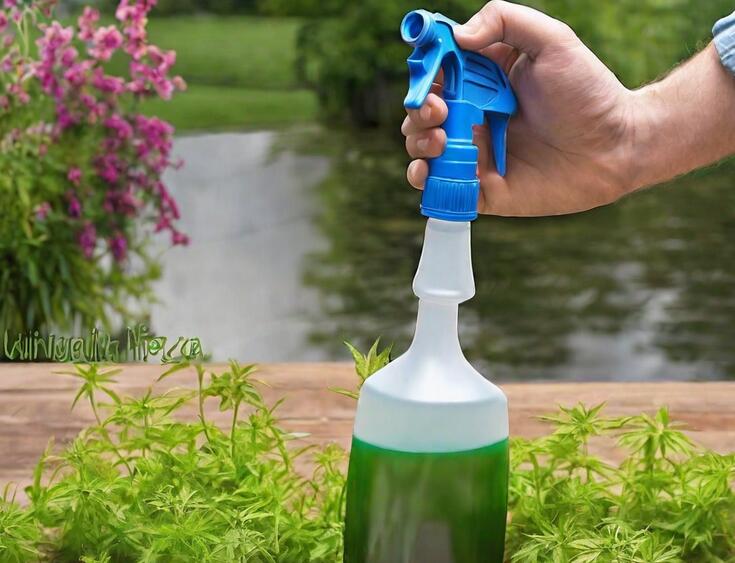
Understanding Vinegar
Vinegar, specifically distilled white vinegar, contains acetic acid, which is the key ingredient responsible for its weed-killing properties. Acetic acid can dry out and damage the cell membranes of plants, leading to their eventual demise.
However, the effectiveness of vinegar as a herbicide depends on its concentration of acetic acid. Household vinegar typically has around 5% acetic acid. Horticultural vinegar with a higher concentration (20-30%) is often used for more stubborn weeds.
Benefits of Using Vinegar as a Weed Killer
One of the main reasons people opt for vinegar weed killer is its eco-friendliness and safety. Unlike chemical herbicides, vinegar is non-toxic and poses no harm to pets, children, or the environment.
It is an excellent alternative for those who prioritize organic gardening practices and want to avoid synthetic chemicals.
Another advantage of vinegar weed killer is its cost-effectiveness. Commercial herbicides can be expensive, especially for larger areas. Vinegar, on the other hand, is readily available and affordable, making it an economical choice for weed control.
In addition to being environmentally friendly and cost-effective, vinegar weed killer has other benefits. For example, vinegar is biodegradable, meaning it breaks down naturally without leaving harmful residues in the soil or water. This makes it a sustainable choice for weed control.
Furthermore, vinegar weed killer can be used as a spot treatment, allowing you to target specific weeds without affecting the entire garden. This precision minimizes the impact on beneficial insects and pollinators.
Preparing Your Garden for Vinegar Weed Killer Application
Before applying vinegar weed killer, it is essential to identify the target weeds in your garden. Different weeds may require specific concentrations or application techniques for optimal results.
Additionally, timing is crucial for successful weed control. It is best to apply vinegar weed killer on a dry and sunny day to ensure the vinegar has enough time to work on the weeds without being washed away by rain.
To protect desirable plants from vinegar spray, consider using a shield or covering them with plastic or cardboard. This will prevent any accidental contact and minimize the risk of damage to your garden.
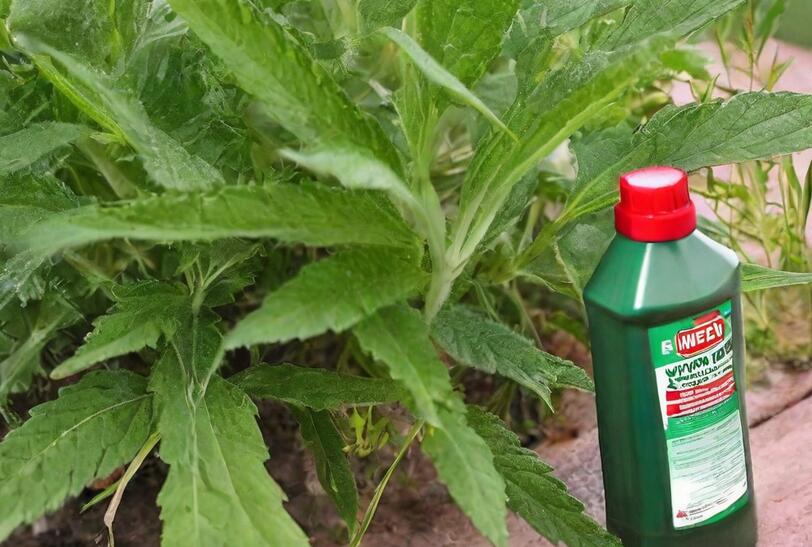
Vinegar Weed Killer Recipe: The Basic Formula
Creating your vinegar weed killer is simple and cost-effective. Here is a basic recipe to get you started:
Ingredients:
- Distilled white vinegar (5% acetic acid)
- Liquid dish soap (optional)
Instructions:
- Fill a spray bottle with distilled white vinegar.
- Optionally, add a few drops of liquid dish soap to help the vinegar stick to the weeds.
- Shake the spray bottle well to mix the ingredients.
- Direct the spray bottle nozzle at the base of the weeds and spray until the leaves and stems are thoroughly coated.
- Allow the vinegar to dry on the plants. Reapply as needed for stubborn weeds.
Remember to wear protective clothing, gloves, and eyewear when handling and applying vinegar weed killer to avoid any potential contact with your skin or eyes.
Enhanced Vinegar Weed Killer Recipes
While the basic vinegar weed killer recipe is effective for many common weeds, you can enhance its potency for more stubborn or persistent plants. Here are a couple of variations you can try:
1. Adding Salt
Adding salt to the vinegar weed killer solution can increase its effectiveness. The salt acts as a desiccant and helps to dry out the weeds more quickly.
However, it is important to note that salt can also have a detrimental effect on the soil and surrounding vegetation, so use this enhanced recipe with caution.
To create a salt-enhanced vinegar weed killer:
- Follow the basic vinegar weed-killer recipe.
- Add 1-2 tablespoons of salt to the vinegar solution.
- Stir the solution well to dissolve the salt.
- Apply the solution to the weeds as directed in the basic recipe.
Keep in mind that excessive salt can damage the soil and make it less suitable for desirable plants. Use this recipe sparingly and avoid applying it near sensitive plants or in areas where you plan to grow new plants.
2. Customizing with Essential Oils
By adding essential oils to the vinegar weed-killer recipe, you can enhance its weed-killing properties and introduce additional benefits.
Some essential oils, such as clove oil or citrus oil, have natural herbicidal properties and can help to boost the effectiveness of the vinegar. Furthermore, essential oils can provide a pleasant aroma and act as natural deterrents for pests.
To customize your vinegar weed killer with essential oils:
- Follow the basic vinegar weed-killer recipe.
- Add a few drops (5-10) of your chosen essential oil to the vinegar solution.
- Stir the solution well to mix the essential oil.
- Apply the solution to the weeds as directed in the basic recipe.
Experiment with different essential oils and concentrations to find the right combination that works for your specific weed control needs.
Keep in mind that some essential oils may have stronger odors or potential allergenic properties, so use them in well-ventilated areas and with caution.
Application Techniques for Vinegar Weed Killer
When applying vinegar weed killer, it is important to use the appropriate technique for the best results. Here are two common methods:
1. Spot Treatments
For isolated weeds or small patches of weeds, spot treatments are ideal. Fill a spray bottle with the vinegar weed killer solution and aim the nozzle directly at the base of the weeds.
Spray until the leaves and stems are thoroughly coated. Be careful to avoid spraying desirable plants.
To optimize spot treatments, consider these tips:
- Adjust the nozzle to produce a fine mist for better coverage.
- Apply the vinegar weed killer solution in the morning or late afternoon when the temperature is cooler, as this can enhance the absorption of the acetic acid by the weeds.
- Reapply as necessary for stubborn weeds, ensuring that the solution thoroughly coats the targeted plants.
2. Garden Sprayer for Large Areas
If you have a larger area to treat, consider using a garden sprayer. Fill the sprayer with the vinegar weed killer solution and adjust the nozzle for a fine mist. Apply the solution evenly over the affected area, being mindful of any desirable plants that need protection.
To maximize the effectiveness of the garden sprayer method:
- Choose a sprayer with an adjustable nozzle to control the spray pattern and coverage.
- Apply the solution when the weather is dry and calm to prevent drift and ensure the vinegar remains on the weeds.
- Avoid walking on the treated area until the vinegar has dried to prevent unintentional transfer.
Remember to wear protective clothing and eyewear when applying vinegar weed killer to avoid any potential contact with your skin or eyes.
Post-Application Care and Maintenance
After using vinegar weed killer, it is important to monitor the treated area for new weed growth. While vinegar can effectively kill existing weeds, it does not have long-lasting residual effects. You may need to reapply the vinegar weed killer as new weeds emerge.
To prevent future weed growth, focus on cultivating healthy soil. Healthy soil promotes robust plants, making it more difficult for weeds to establish themselves.
Regularly amend the soil with organic matter, such as compost, and practice proper watering and mulching techniques.
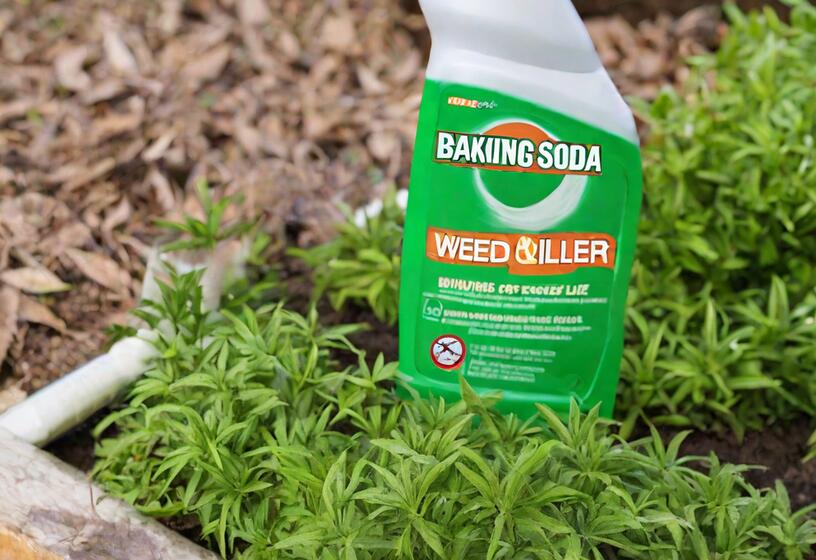
Other Homemade Weed Killer Recipes
In addition to vinegar weed killer, there are other homemade recipes you can try to control weeds naturally.
1. Salt and Dish Soap Weed Killer
Ingredients:
- 1 cup table salt
- 1 gallon of white vinegar
- 1 tablespoon liquid dish soap
Instructions:
- In a large container, mix the salt and vinegar until the salt is dissolved.
- Add the dish soap to the mixture and stir well.
- Pour the solution into a spray bottle or garden sprayer.
- Apply the solution directly to the weeds, making sure to coat the leaves and stems thoroughly.
- Allow the solution to dry on the plants. Reapply as needed for stubborn weeds.
The addition of salt in this recipe helps to dehydrate the weeds, while the dish soap acts as a surfactant, helping the solution stick to the plants. Be cautious when using this recipe, as salt can hurt the soil and surrounding vegetation.
2. Boiling Water Weed Killer
Ingredients:
- Water
- Kettle or pot for boiling water
Instructions:
- Boil a large pot or kettle of water.
- Carefully pour the boiling water directly onto the weeds, ensuring that it reaches the base and covers the leaves.
- Repeat as necessary for stubborn weeds.
Boiling water is a simple and effective method for spot-treating weeds. The high temperature kills the weeds by scalding them. This technique is particularly useful for weeds growing in cracks, pavement, or other areas where you don’t want any plant growth.
Keep in mind that boiling water can also harm desirable plants, so use caution and precision when applying this method.
3. Baking Soda Weed Killer
Ingredients:
- 1 tablespoon baking soda
- 1 gallon of water
Instructions:
- Dissolve the baking soda in a gallon of water.
- Pour the solution into a spray bottle or garden sprayer.
- Spray the solution directly onto the weeds, ensuring thorough coverage.
- Reapply as necessary for persistent weeds.
Baking soda is known for its ability to alter the pH of the soil, creating an unfavorable environment for weed growth.
This recipe works best on weeds that prefer alkaline soil conditions. It is a milder option compared to vinegar or salt-based recipes and may require multiple applications for effective weed control.
How to Use Vinegar Weed Killer Recipe Safely?
Using vinegar weed killer safely is important to protect yourself, desirable plants, and the environment. Here are some guidelines to follow when using vinegar weed killer:
1. Wear Protective Clothing
Before applying vinegar weed killer, put on protective clothing, gloves, and eyewear. This will help prevent any potential contact with your skin or eyes.
2. Choose the Right Concentration
Household vinegar typically has around 5% acetic acid, which is effective for most common weeds. However, for more stubborn weeds, you may opt for horticultural vinegar with a higher concentration (20-30% acetic acid).
Be cautious when using higher concentrations, as they can increase the risk of harm to desirable plants and soil.
3. Apply on a Dry Day
Choose a dry day with little to no wind for applying vinegar weed killer. This will prevent the spray from drifting onto desirable plants and minimize the risk of the vinegar being washed away by rain.
4. Allow for Drying Time
Once you’ve sprayed the vinegar weed killer, allow it to dry on the plants. This will ensure that the acetic acid can penetrate the weeds effectively. Avoid any contact with the treated plants until they are dry.
5. Protect Desirable Plants
To safeguard desirable plants from vinegar spray, use shields or cover them with plastic or cardboard during application. This will prevent any accidental contact and minimize the risk of damage to your garden.
6. Avoid Runoff
Be mindful of where the vinegar weed killer runoff goes. Avoid spraying near water sources, as vinegar can be harmful to aquatic life. If any runoff occurs, minimize its impact by redirecting it away from sensitive areas.
7. Dispose of Unused Solution Properly
If you have any leftover vinegar weed killer solution, dispose of it responsibly. Do not pour it down drains or into water sources. Instead, dilute it with water and apply it to areas where weed growth is not a concern.
FAQs
Q: Can vinegar weed killer harm the soil or surrounding vegetation?
A: Vinegar can lower the pH of the soil temporarily, but the impact is generally minimal. However, it is essential to avoid overspray or direct contact with desirable plants, as vinegar can harm or kill them.
To prevent potential harm to the soil, consider using vinegar weed killer sparingly and applying it directly to the weeds, rather than broadcasting it over the entire area. This targeted approach minimizes the exposure of the soil to vinegar.
Q: How long does it take for weeds to die after using vinegar?
A: The time it takes for weeds to die after vinegar application varies depending on factors such as weed type, concentration of vinegar, and weather conditions. In general, you can expect to see visible effects within a few hours to a few days.
Keep in mind that some weeds may require multiple applications for complete eradication. Monitor the treated area and reapply vinegar weed killer as necessary until the weeds are fully controlled.
Q: Are there any weeds that vinegar weed killer won’t work on?
A: Vinegar weed killer is most effective on annual weeds and young perennial weeds. Deep-rooted or established perennial weeds may require multiple applications or additional control methods.
To increase the effectiveness of vinegar weed killer for tougher weeds, consider using horticultural vinegar with a higher acetic acid concentration.
Conclusion
Using vinegar as a weed killer is an eco-friendly and cost-effective solution for controlling unwanted vegetation in your garden. By following the step-by-step vinegar weed killer recipe and applying it correctly, you can effectively manage weeds without resorting to harsh chemicals.



